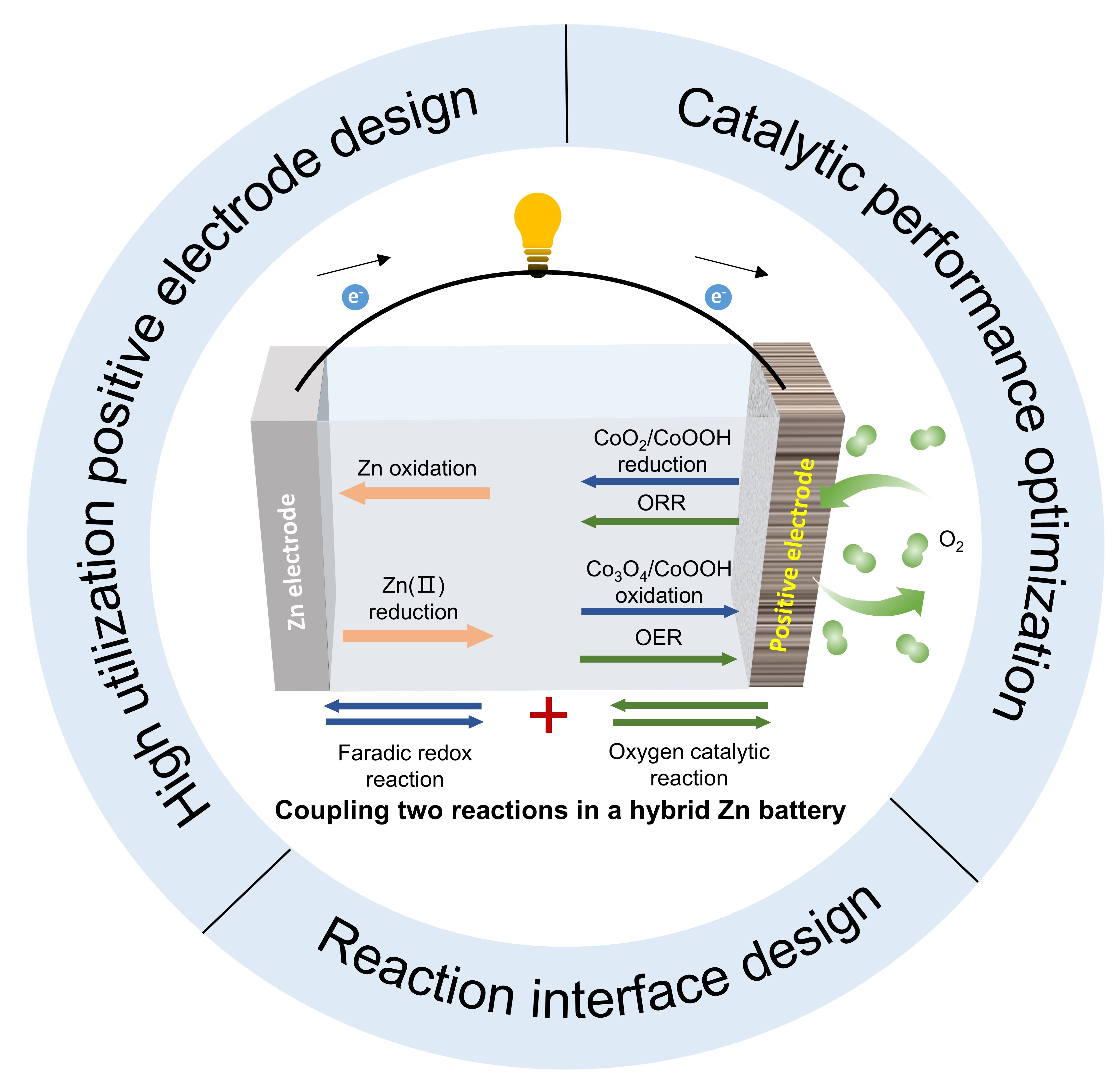Current position: Home >> NEWS >> Research News
Shang Wenxu et al. published an article in Batteries & Supercaps

Insight into the Hybrid Zn-Co/Air Batteries Coupling Faradic Redox and Oxygen Catalytic Reactions
Zinc-based batteries have shown significant competitive advantages in the field of energy storage due to their high theoretical specific capacity (820 mAh g⁻¹), multi-electron transfer characteristics and the intrinsic safety of alkaline potassium hydroxide electrolyte systems. However, the discharge voltage of traditional zinc-air batteries is usually lower than 1.4 V, and zinc-cobalt batteries are limited by the low theoretical capacity of the cathode material (such as Ni(OH)₂ is only 289 mAh g⁻¹), and their energy density is difficult to break through the theoretical limit of 300 Wh kg⁻¹. In order to break through the performance bottleneck of a single system, the researchers proposed a hybrid zinc-cobalt air battery architecture, which achieves the synergistic optimization of high voltage platform and high specific capacity by simultaneously coupling the Faraday redox reaction of metal oxides with the oxygen electrocatalytic process through a cleverly designed dual-functional cathode. However, in practical applications, this system still faces key challenges such as low bulk utilization of active materials, insufficient density of oxygen catalytic active sites, and mismatched solid-liquid-gas three-phase interfaces, which seriously restrict its commercialization process. This paper systematically summarizes the latest progress of hybrid zinc-cobalt air batteries, and conducts in-depth analysis around the three core issues of active material structure design, catalytic activity optimization, and reaction interface regulation, providing important theoretical guidance and technical paths for the development of the next generation of high-performance zinc-based energy storage devices.
July 2025
